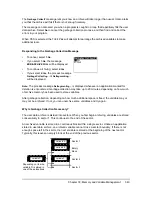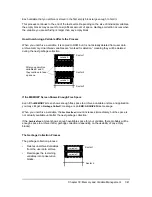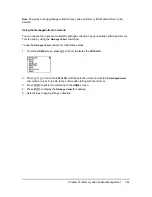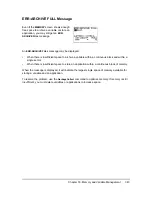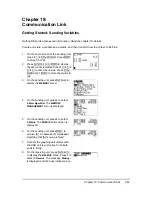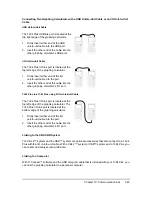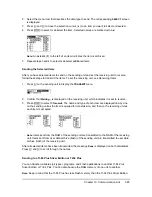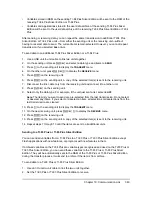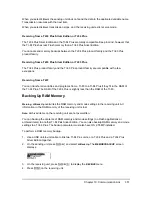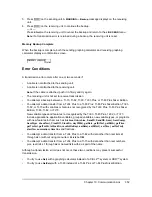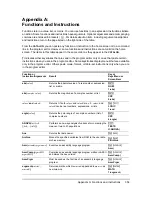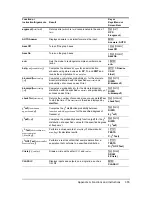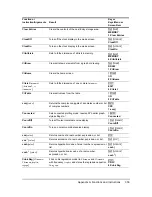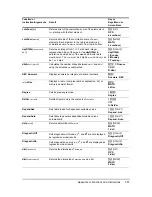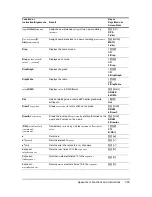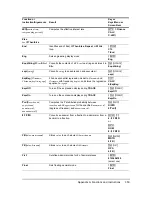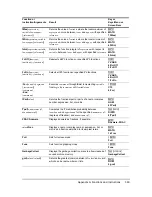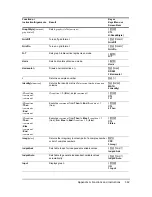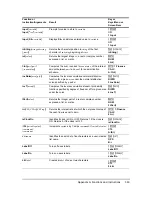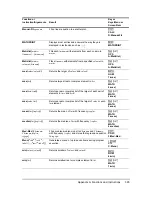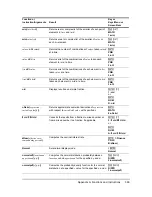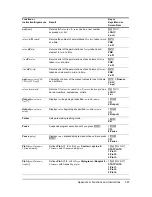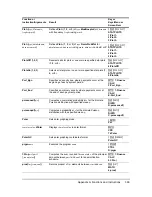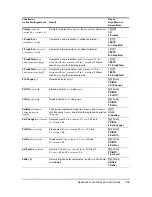
Appendix A: Functions and Instructions
354
Appendix A:
Functions and Instructions
Functions return a value, list, or matrix. You can use functions in an expression. Instructions initiate
an action. Some functions and instructions have arguments. Optional arguments and accompanying
commas are enclosed in brackets ( [ ] ). For details about an item, including argument descriptions
and restrictions, turn to the page listed on the right side of the table.
From the
CATALOG
, you can paste any function or instruction to the home screen or to a command
line in the program editor. However, some functions and instructions are not valid on the home
screen. The items in this table appear in the same order as they appear in the
CATALOG
.
†
indicates either keystrokes that are valid in the program editor only or ones that paste certain
instructions when you are in the program editor. Some keystrokes display menus that are available
only in the program editor. Others paste mode, format, or table-set instructions only when you are
in the program editor.
Function or
Instruction/Arguments
Result
Key or
Keys/Menu or
Screen/Item
abs(
value
)
Returns the absolute value of a real number, expression,
list, or matrix.
NUM
1:abs(
abs(
complex value
)
Returns the magnitude of a complex number or list.
CPX
5:abs(
valueA
and
valueB
Returns 1 if both
valueA
and
valueB
are
ƒ
0
.
valueA
and
valueB
can be real numbers, expressions, or lists.
y :
LOGIC
1:and
angle(
value
)
Returns the polar angle of a complex number or list of
complex numbers.
CPX
4:angle(
ANOVA(
list1
,
list2
[
,
list3
,
...
,
list20
]
)
Performs a one-way analysis of variance for comparing the
means of two to 20 populations.
…
TESTS
H:ANOVA(
Ans
Returns the last answer.
y Z
Archive
Moves the specified variables from RAM to the user data
archive memory.
y L
5:Archive
Asm(
assemblyprgmname
)
Executes an assembly language program.
y N
Asm(
AsmComp(
prgmASM1,
prgmASM2
)
Compiles an assembly language program written in ASCII
and stores the hex version.
y N
AsmComp(
AsmPrgm
Must be used as the first line of an assembly language
program.
y N
AsmPrgm
augment(
matrixA
,
matrixB
)
Returns a matrix, which is
matrixB
appended to
matrixA
as
new columns.
y >
MATH
7:augment(

